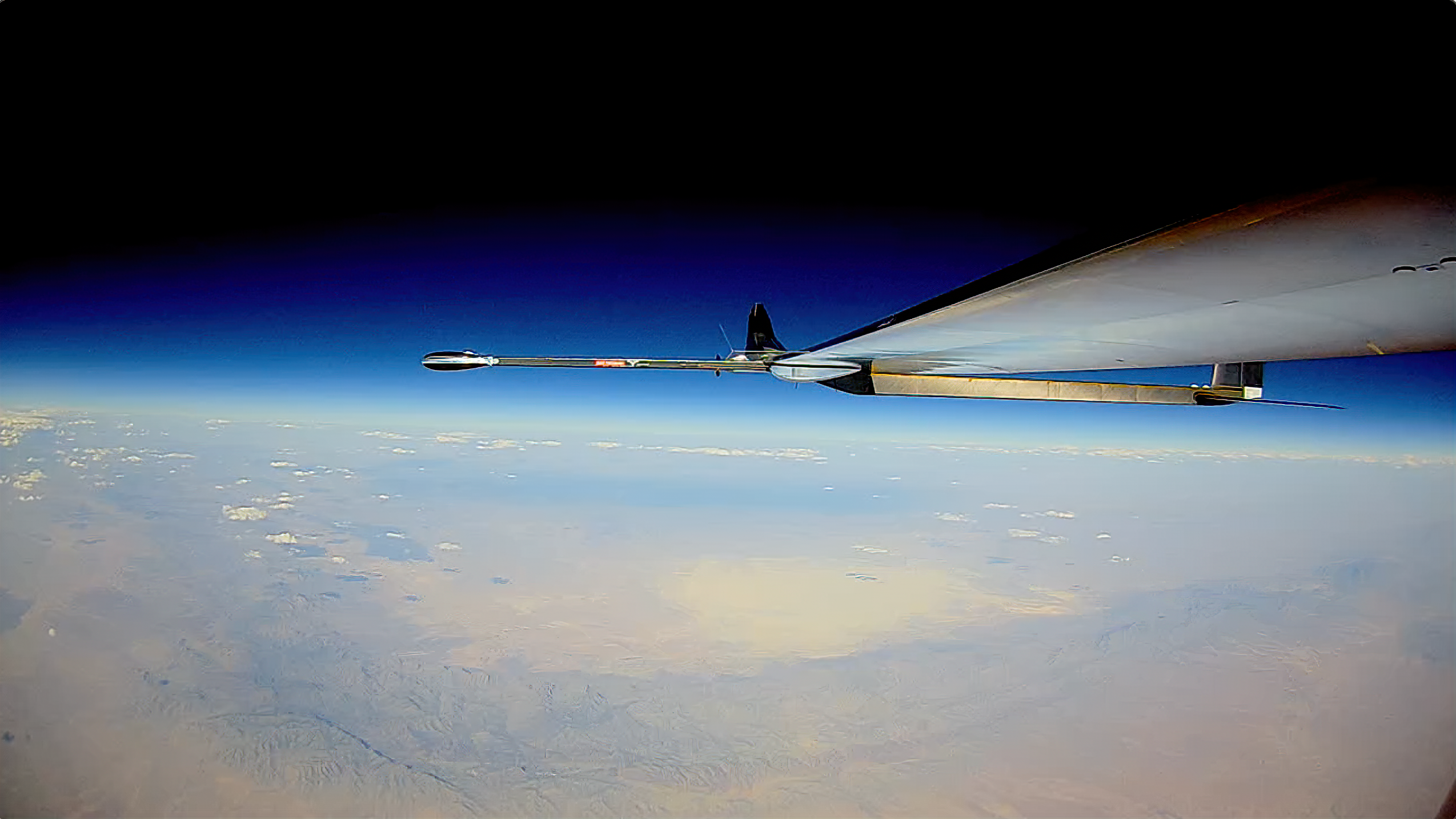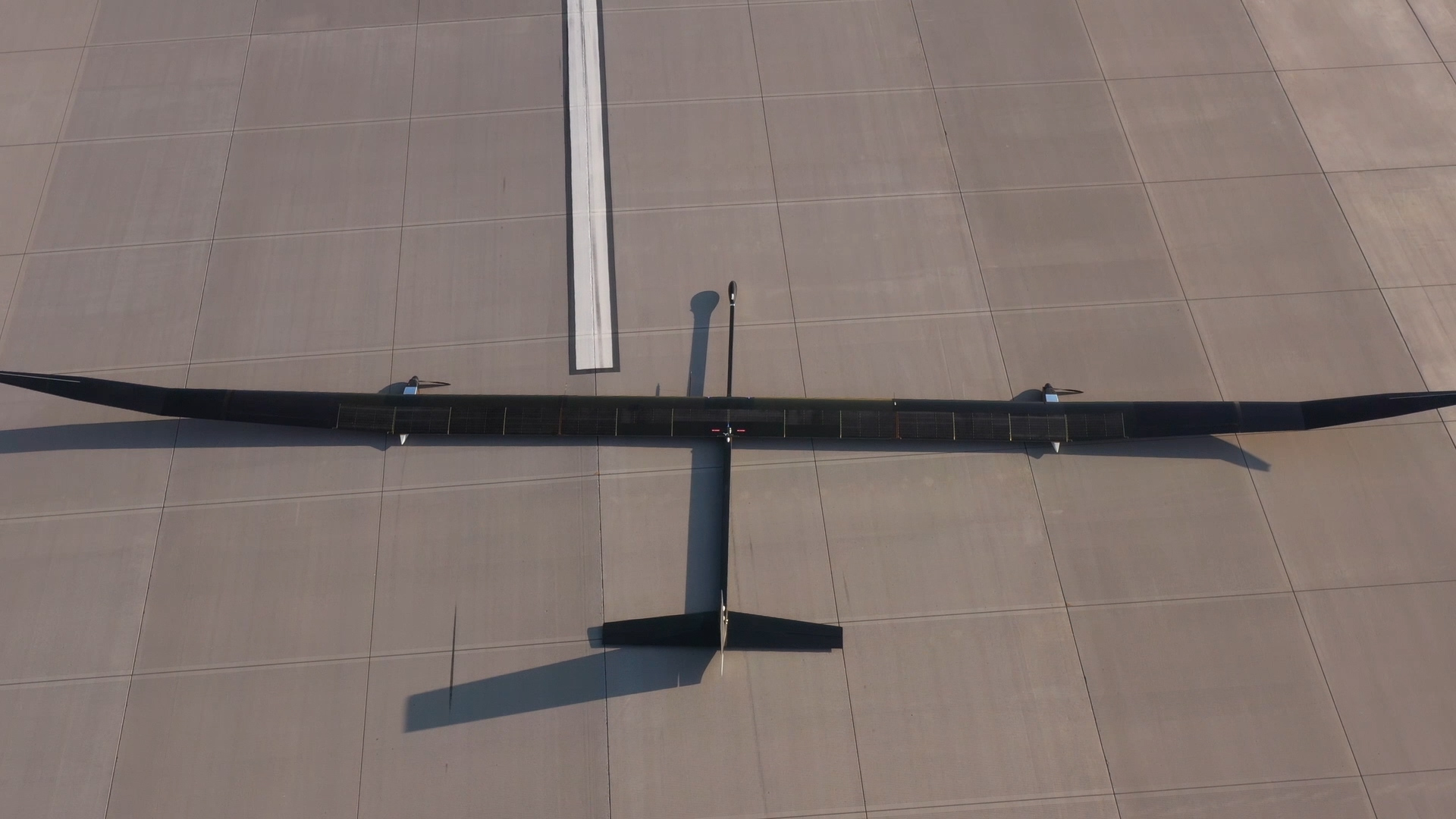Met Office supports BAE Systems Prismatic flight
Author: Press Office
09:30 (UTC+1) on Fri 14 Jul 2023
Expert Met Office scientists and meteorologists have supported the successful flight of BAE Systems Prismatic’s PHASA-35 high altitude Uncrewed Air System.
The PHASA-35 platform is designed to provide a persistent, stable platform for monitoring, surveillance, disaster relief and communications such as providing 5G. It is ultra-light weight, weighing just 150kg, and has the same wingspan as a Boeing 737.
Using solar panels along its 35m wingspan, the aircraft is designed to stay in the air for months at a time at altitudes of 50-65,000 feet.
With such a lightweight airframe, forecasting the right conditions for launch, climb, cruise and landing is crucially important. Met Office experts have provided forecast model data and scientific analysis to provide the best possible information and support all the way through to the top of the atmosphere.
PHASA-35 is bridging the gap between air and space 🛰️
— BAE Systems Air (@BAESystemsAir) July 14, 2023
Over a 24-hour period, PHASA-35 soared to more than 66,000ft, reaching the stratosphere, before landing successfully.
Find out more: https://t.co/vot1sXVhb2 pic.twitter.com/ED5rrOoAfh
The Met Office team have also provided a visualisation capability, working alongside partners IBL so weather information can be fully integrated into the BAE Systems Prismatic mission planning process. The Met Office College will also be providing an aviation meteorology training package for the PHASA-35 team.
Once the aircraft enters the stratosphere and at its cruising altitude, it is no longer subject to the normal weather we experience within Earth’s lower atmosphere. But that doesn’t mean the end of Met Office support. There is a delicate balance between flight optimisation, avoiding the weather within the troposphere and remaining in the stratosphere which can vary in height. Met Office meteorologists and forecast tools were able to provide detailed insights into where this boundary was to enhance efficiency and mission success.
 Image: BAE Systems Prismatic.
Image: BAE Systems Prismatic.
Wayne Elliott, Head of Defence at the Met Office, said: “I’m thrilled that the first high altitude flight has been a success and that the Met Office has been able to support such an important and innovative project. Alongside tailored data and software, Met Office experts have provided some critical insights that supported this success with some very bespoke challenges to overcome. We’re looking forward to supporting Prismatic and BAE Systems as the project develops. I’d also like recognise our technology partner IBL whose expertise was fundamental to this work.”
The expertise of Met Office science and technical specialists is also helping the team understand where and when the platform could be used around the world within the operating boundaries for future test and operational flights.
Dave Corfield, CEO of BAE Systems’ Prismatic Ltd, said: “Being able to accurately forecast the weather conditions for the ascent, cruise and descent phases of flight were critical to our mission success. The expertise and support we received from the Met Office in the months leading up to, and during the flight, was outstanding. The combination of BAE Systems and Met Office capabilities on the PHASA-35 programme is a tremendous demonstration of world leading UK technology.”
 Image: BAE Systems Prismatic.
Image: BAE Systems Prismatic.
Creating a solution to visualise the weather data and analysis done by the Met Office was crucial to make it usable for the flight operations team. Working in partnership with IBL a custom software package was developed to feed directly into mission planning tools. IBL Chief Executive, Michal Wice, added: “We are immensely proud to have had the opportunity to contribute to the success of this ground-breaking project. Operating such an innovative aircraft under unique operational weather conditions demands a comprehensive understanding and confidence in every single aspect of the weather situation. The expertise of the Met Office, coupled with their high-resolution forecast data, was brought to life by IBL’s software.
“This collaboration provided an essential advantage during the planning process, ultimately contributing to the successful execution of this remarkable voyage. It is gratifying to see that BAE and Prismatic were able to leverage this valuable collaboration between the Met Office and IBL, delivering added value through our joint efforts.”
You can follow the development of the PHASA-35 project on the Prismatic Website as the Met Office continues to provide expert support and analysis.





